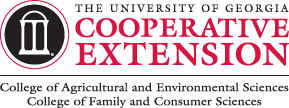Category Archives: Economics, Marketing, Policy
2018 UGA Cotton Budgets
Below are links for the 2018 UGA Cotton Budgets developed by Don Shurley, Amanda Smith, and Yangxuan (Serinna) Liu. 2018 Irrigated Conventional Tillage Cotton Budget … Continue reading
11th Annual Georgia Cotton Conference & UGA Cotton Production Workshop (Wednesday, January 31, 2018)
The Georgia Cotton Commission is pleased to announce the guest speakers at the Commission’s 10th Annual Meeting scheduled for Wednesday, January 31, 2018, at the UGA … Continue reading
2017 Georgia Quality Cotton Awards
The Georgia Quality Cotton Awards for the 2017 crop will be presented during the Georgia Cotton Commission Annual Meeting and UGA Cotton Production Workshops on Wednesday, January 31, 2018. For more information and to download the nomination form, click on the link below to continue reading.
2018 Local UGA Cotton County Production Meetings (Schedule)
Georgia Cotton Folks, The 2018 UGA local county cotton production meeting season has just begun. Each year members of the UGA Cotton Team present information … Continue reading
2018 UGA Cotton Production Guide
Georgia Cotton Folks, Below is the link for the 2018 UGA Cotton Production Guide. Hard paper copies of the guide can be obtained by contacting … Continue reading
Cotton Marketing News– August 11, 2017
Well, So Much for the 18-Million Bale Scenario—
And Those Higher Prices
Prior to this week’s USDA crop production estimates, the 2017 US cotton crop was projected at 19 million bales. There seemed to be general consensus, given the crop conditions in parts of Texas, that the crop would not get bigger with this week’s report. There was some belief that the crop is actually less than 19 million (more in the 18 million neighborhood) but that this may not be reflected yet in this week’s August numbers.
The revised crop estimate for August is now 20.55 million bales—1.55 million bales more than the July estimate. Not only did the crop not hold at around 19 million bales but now, if we’re indeed going to eventually retreat to the 18 million bale mark, we’ve got another million and a half bales to cull through.
Continue reading
Generic Base
How Generic Base Could Be Treated in the Cottonseed Proposal. With the 2014 farm bill, cotton base on a farm became Generic Base. To improve cotton’s income “safety net”, cotton industry leadership has sought to make cottonseed a covered commodity and eligible for PLC as an “Other Oilseed” under the current 2014 farm bill. To have a cottonseed program, this would come from the farms Generic Base. Farms with Generic Base and producing cotton or a covered commodity in 2009-2016 would have 2 options for converting Generic Base to cottonseed and/or other bases.
Click below to read further and download/view.
Background and Summary of Recent Cotton Policy Developments
The current farm bill is now in its 4th year and will expire with the 2018 crop year unless extended. Over the past several years, cotton’s unfavorable policy position has been at the forefront and industry leadership has sought ways to improve the income safet net for cotton producers. Recent developments have been positive and enouraging. The CGCS program and a cottonseed policy are seen as ways to “bridge” the gap and help cotton producers until cotton can be addressed longer term in the next farm bill.
Click on the link below to read further and view/download full information.
Estimating 2016 ARC and PLC Payments For Covered Commodities
ARC and PLC payments, if any, are not received until October of the following year after harvest. This is because the price component of ARC and PLC is based on the marketing year for the crop and that is not known until the end of the marketing year. Also, yield data used for ARC are not released by FSA until August or September in the year following harvest.
This delay in payment creates uncertainty in planning and cash flow. Producers may have questions or need estimates of what ARC and PLC payments will be or are expected to be. There are data and tools available to assist in determining these payments.
Click below to read further and download the publication.

